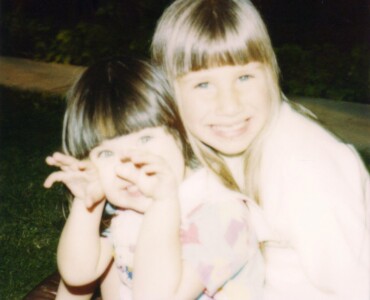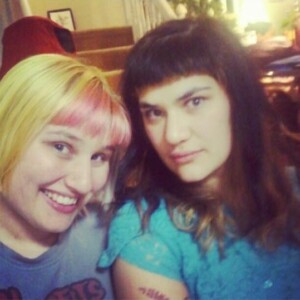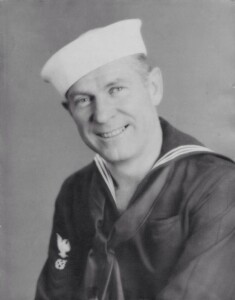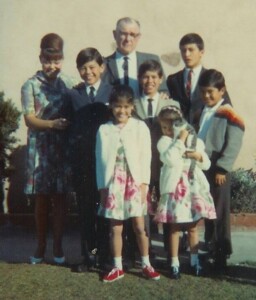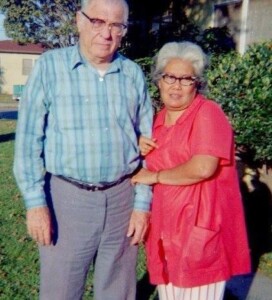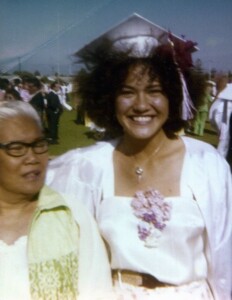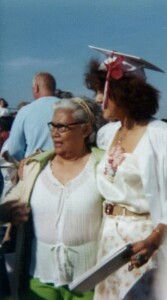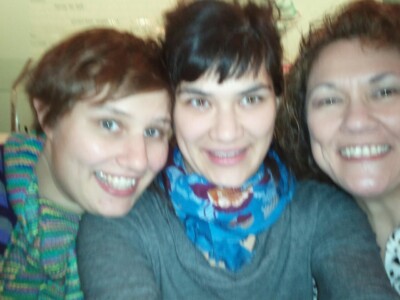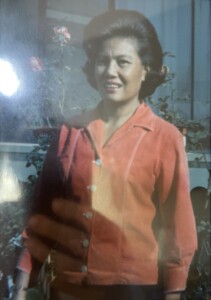calsfoundation@cals.org
What Does an Asian American Look Like?
As someone who seems white and benefits from white privilege, I don’t often find opportunities to dig into my Asian American Pacific Islander heritage. Rather than the monolid eyes that East Asians are known for, Southeast Asians are more often recognized for their darker skin pigment. A person who is half Asian may have pale skin with freckles or tan skin. Once you get to one-quarter, it’s basically impossible to predict how the gene dice will roll. My sister Sienna has a button nose, dark hair, and dark eyes; I have a big nose, light hair, and light eyes.
My mom’s parents had a pretty adorable love story. She was the beautiful seamstress at the tailor shop where he had his suits pressed. He was an American navy officer stationed in the Philippines during World War II. They married and had a son, and as soon as the war was over, he sent for them—bringing her and their first-born to America.
My mom’s mom, a dark-skinned woman, received the unkind epithets familiar to those who came up Black in the South—from her new mother-in-law, no less. But not everyone was horrible, and their family grew. She didn’t teach her children to speak Tagalog, wanting them to fully identify as American, but they picked up a few curse words when her temper got the better of her. She did teach them how to make chicken adobo, a classic Filipino recipe.
My mom was the youngest of their seven children, and in southern California, they experienced a double-edged exclusion, in that white people assumed they were Hispanic while the Spanish-speaking community assumed they were white. As seven half-Filipino kids, they didn’t quite fit in anywhere. But my mom was determined to flourish and thrive.
What I remember of my grandma is her tiny frame, her impossibly long gray-white hair, and the way she always welcomed us into her home with her standard greeting, “Give Grandma big kisses” (but with her accent, it sounded more like “Geeb Gran’ma Beeg Keeses”). I swear, any time I overhear that Filipina accent in an older lady’s voice, it takes me right back.
While my parents were together, my white dad and my tan mama moved their three kids with them to Hawaii. There, my mom was “hapa-haole” (half white) and my siblings and I, at only one-quarter Filipino, weren’t brown enough for some of the kids at school. A girl in my sixth-grade class, Pamela, would punch me hard in the arm. I didn’t really understand it, but in a vague sense, I knew that the native peoples of the Hawaiian Islands had a lot of legitimate reasons to be mad at white folks.
When I was in college, I had the opportunity to study abroad in Japan. There it was easy to befriend not just Japanese students but also students from all over the world, including the Philippines. Later, my mom and sister Sienna had the opportunity to visit the Philippines and spend time there with extended family.
The first time my family visited, once I had moved to Arkansas and gotten settled in my new position working for the CALS Encyclopedia of Arkansas, I took my mom to the Research Room on the second floor of the CALS Roberts Library, where genealogy and local history expert Rhonda Stewart showed us how to use the Genealogy.com website. It wasn’t long before my mom was in tears, having located the ship manifest that listed those two precious passengers: her mom and oldest brother. It’s a funny feeling to hold history in your hands. So, if you haven’t yet, why not? (The staffers in the Research Room of the Roberts Library are ready to help you!)
Especially this month, in which we celebrate both Mother’s Day and Asian American and Pacific Islander (AAPI) Heritage Month, I celebrate my mom and her mom, who made my existence possible.
By Jobe, editorial assistant at the CALS Encyclopedia of Arkansas and programmer for the CALS Writing Circle
